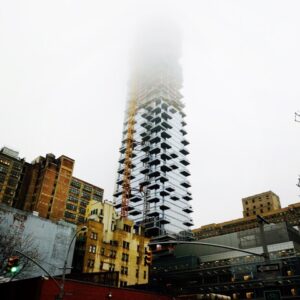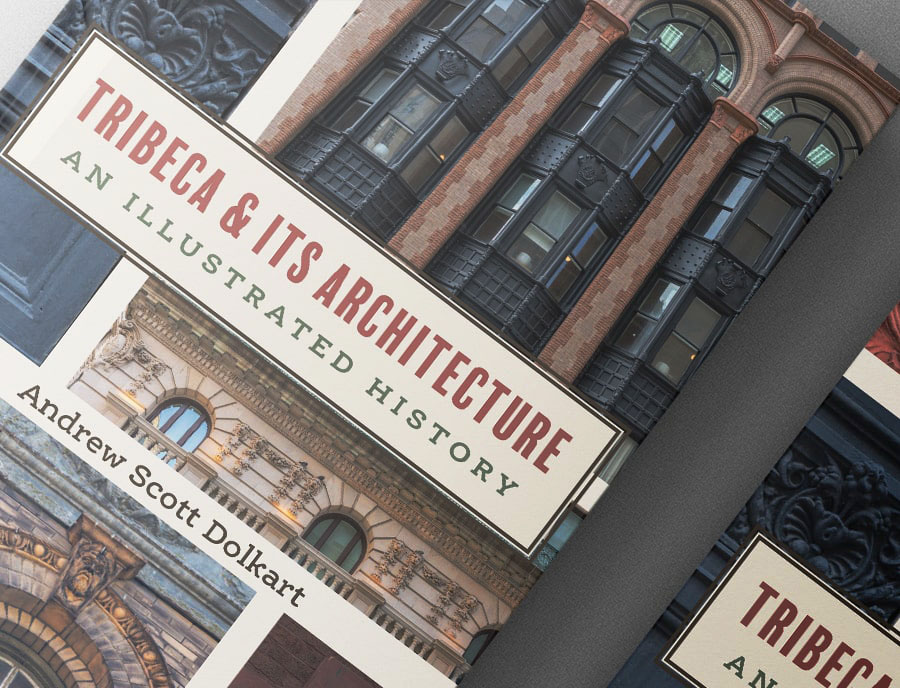Zoning for a Human-scale Tribeca: Position Paper
Note to Tribecans: This Monday, November 9th 6:00 p.m. Our Community Board #1 Planning Committee meets to vote on the misconceived zoning proposal called “Zoning for Quality and Affordability.” Time is 6:00 p.m., 1 Centre Street (municipal building) 22nd floor. For background on this proposal, see our post of last Friday here.
Tribeca’s Current Dire Straits: A Summary of What and Why
The 1961 zoning code in New York has undermined the historic character of Tribeca. As former City Planning Chair Joe Rose described it, the code has “done violence” to the fabric of not just our neighborhood, but neighborhoods all over New York. In Tribeca, there are 6 immense towers now under construction, two of which are so far advanced we can all see them from afar. There are 33 buildings with important historic fabric under threat of demolition, and 6 additional sites where there are obvious plays among developers to plan for immense towers on the Church, Broadway, and West Broadway corridors.
There are several forces driving this problem:
- The current historic districts are too small and their borders zig-zag without logic. The result is that too many properties with important historic fabric have no protection. In all, historic Tribeca has 96 borders, all of which are subject to an unprecedented speculative real estate frenzy in which free-riding developers sell “Tribeca” to high-rise tower dwellers. And the Landmarks Preservation Commission acts as if it has been told to “stand down” by the real power, the Real Estate Board of New York.
- Too many areas of Tribeca, notably the Broadway corridor, West Street and parts of Tribeca South are irrationally zoned for excessive floor area ratios and heights (C6 with a FAR of 10 and also C4). This allows for “as of right” heights that are out-of-scale with the majority of buildings in Tribeca. Obviously, a downzoning is called for.
- The system currently allows developers to speculatively buy up air rights mid-block and stack them on top of a corner lot, which may already have C6 zoning. This results in even more height. The code also encourages them to merge adjacent lots to create even more buildable floor area for the final, merged lot. These practices need game-changing, new regulation.
- Even for those blocks that have contextual zoning, the word “contextual” is so weakly defined so as to be useless for serious regulatory purposes. In other words, contextual has become an architectural joke – it is just too weakly defined.
- Developers are asked to make promises of public amenities (schools, parks, plazas, affordable housing) in exchange for extra height, but the resulting amenities are not worth the loss of other public goods. The upshot: the long-term reduction in the quality of life and human-scale of the neighborhood, losses that cannot be regained.
Here Are Seven Zoning Changes That Would Better Protect Tribeca’s Character
- Tribeca needs a special overlay zoning district (Canal to Murray, West to Centre) with a height limit for new construction such that the average height of new construction cannot exceed the average height of the historic fabric already there, and in no case should height the exceed either 6 stories or 65 feet. This reflects the layered effect historic Tribeca sustained prior to 1930.
- The word contextual and context should be redefined to mean: a fitting and exemplary combination of mass, height, method of construction, cornice line, materials, void ratios, and architectural language. All of these design elements need to be related to the visual character to the existing historic fabric of a specific block, not borrowed willy-nilly from other cities or neighborhoods.
- FAR should not to be increased within the special overlay district for any type of public amenity or bonus deal. No height for amenity deals….Period.
- For the purposes of FAR calculations, Tribeca’s streets within the overlay district should be considered to be “narrow” streets, thus respecting Tribeca’s historic off-the-grid character.
- Zoning lot mergers and air rights transfers should not not result in exceeding the height limit imposed in point 1.
- There should be a demolition moratorium for buildings in Tribeca constructed prior to 1945, be they in historic districts or not so that there is time to finalize our proposal for an expanded historic district for the National Registry of Historic Places.
- The length of street frontage for businesses should be limited to encourage small businesses rather than larger ones that demand long frontages. There should be architectural differentiation along the street wall to avoid either blank walls or long walls of glass (and of course, the Small Business Survival Act should also be passed by the City Council).



